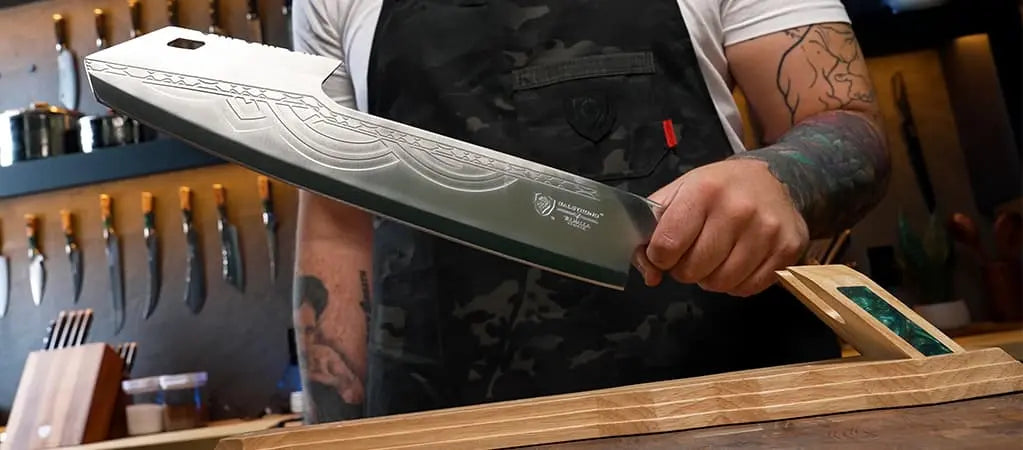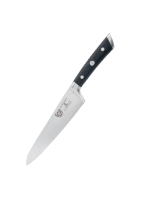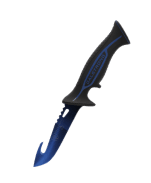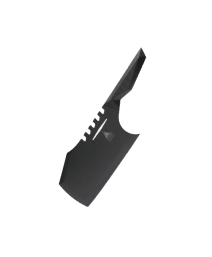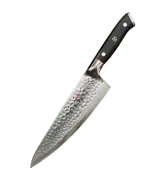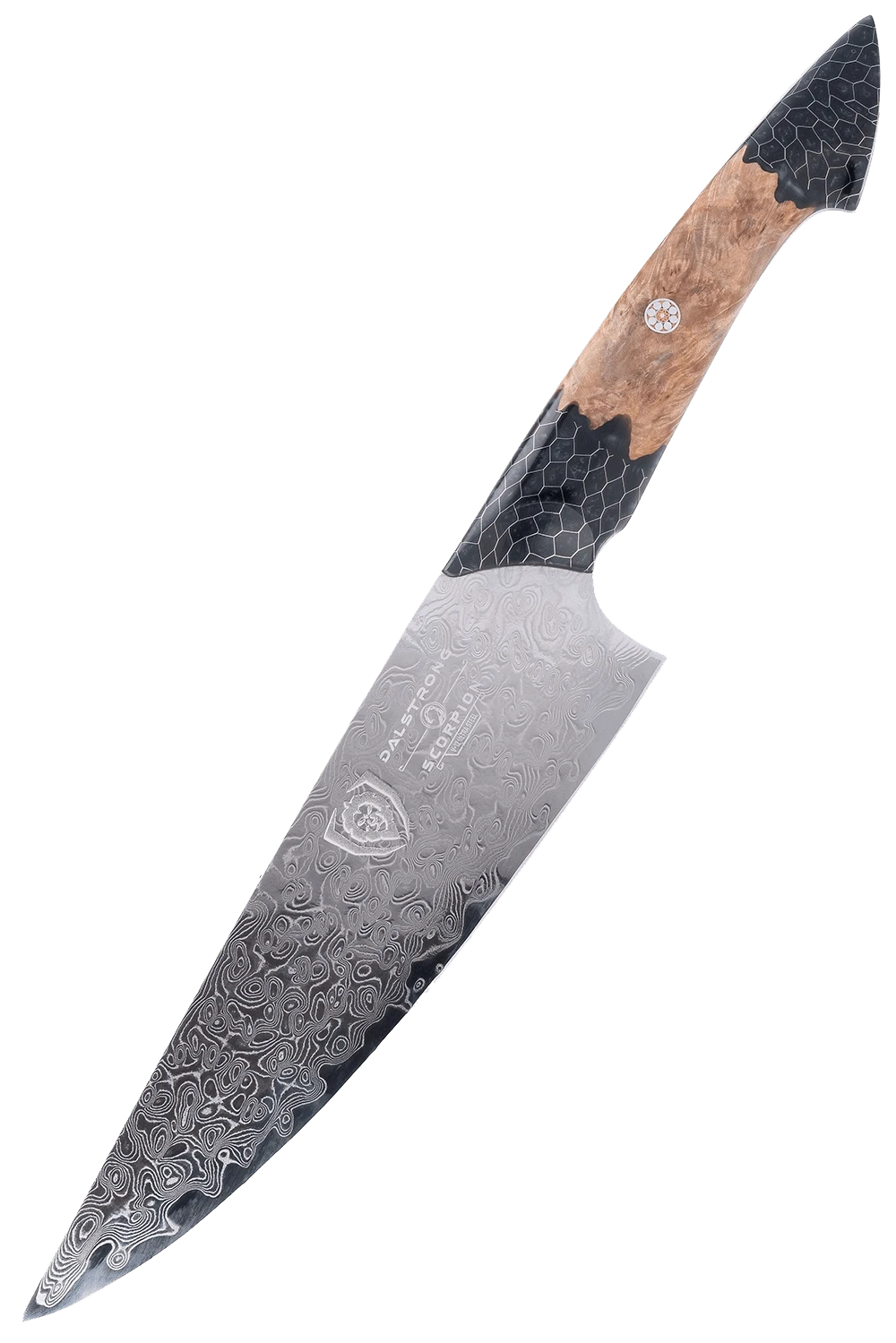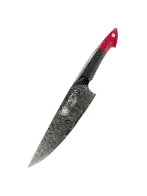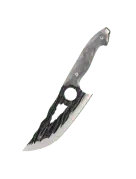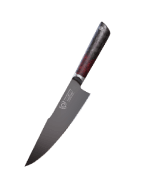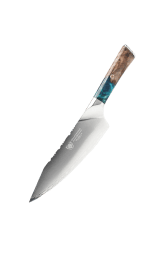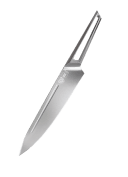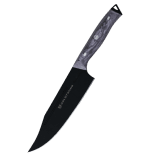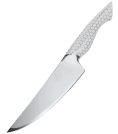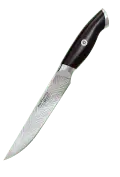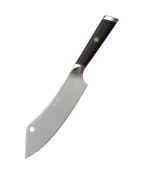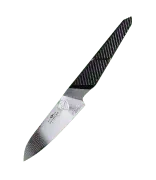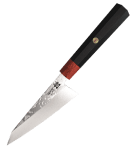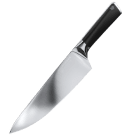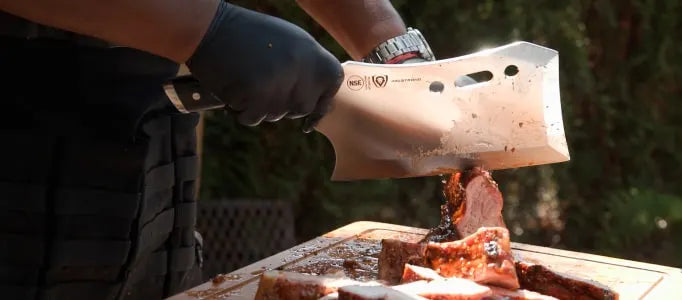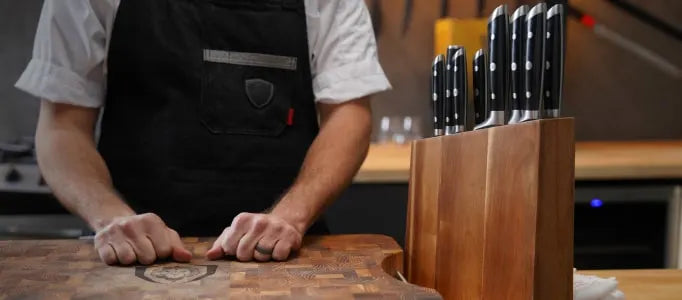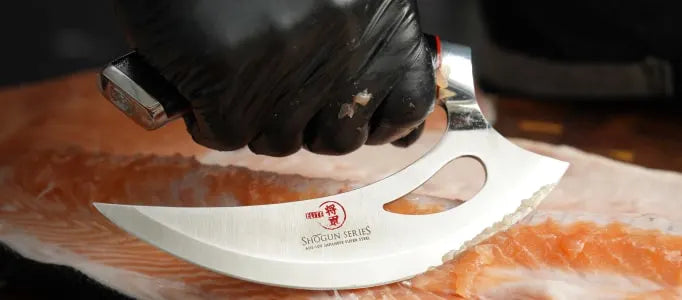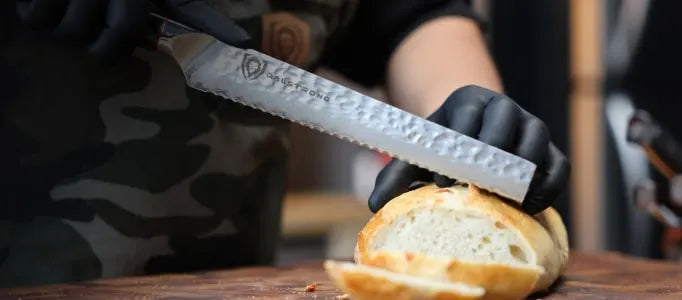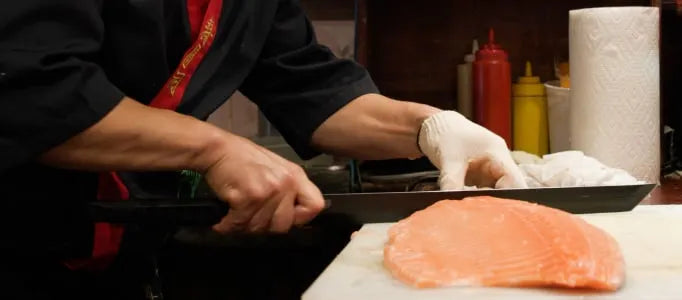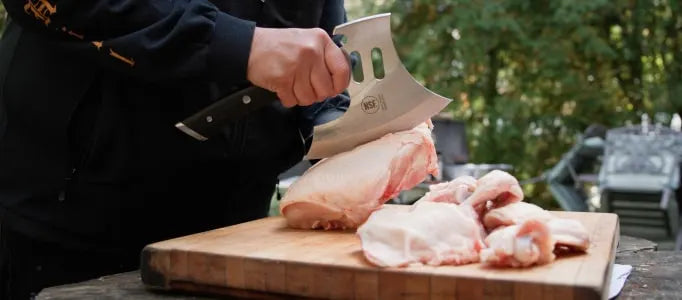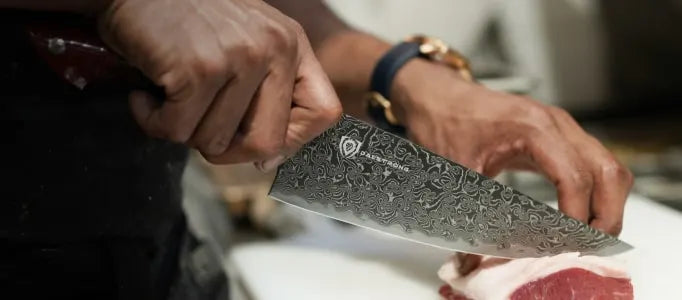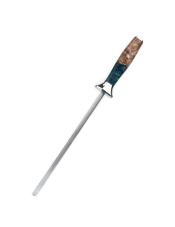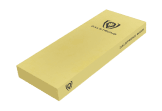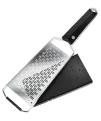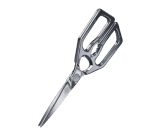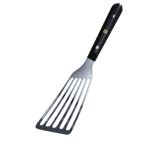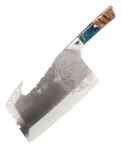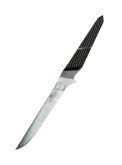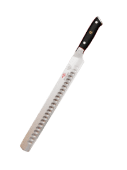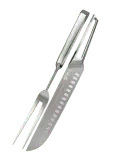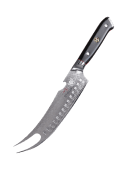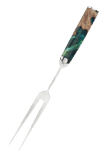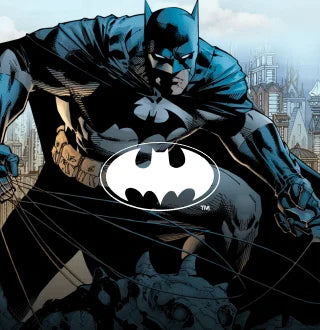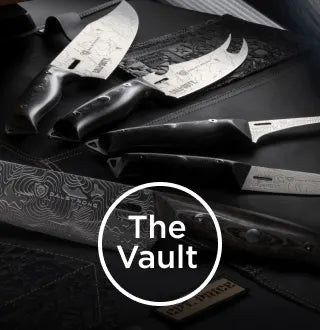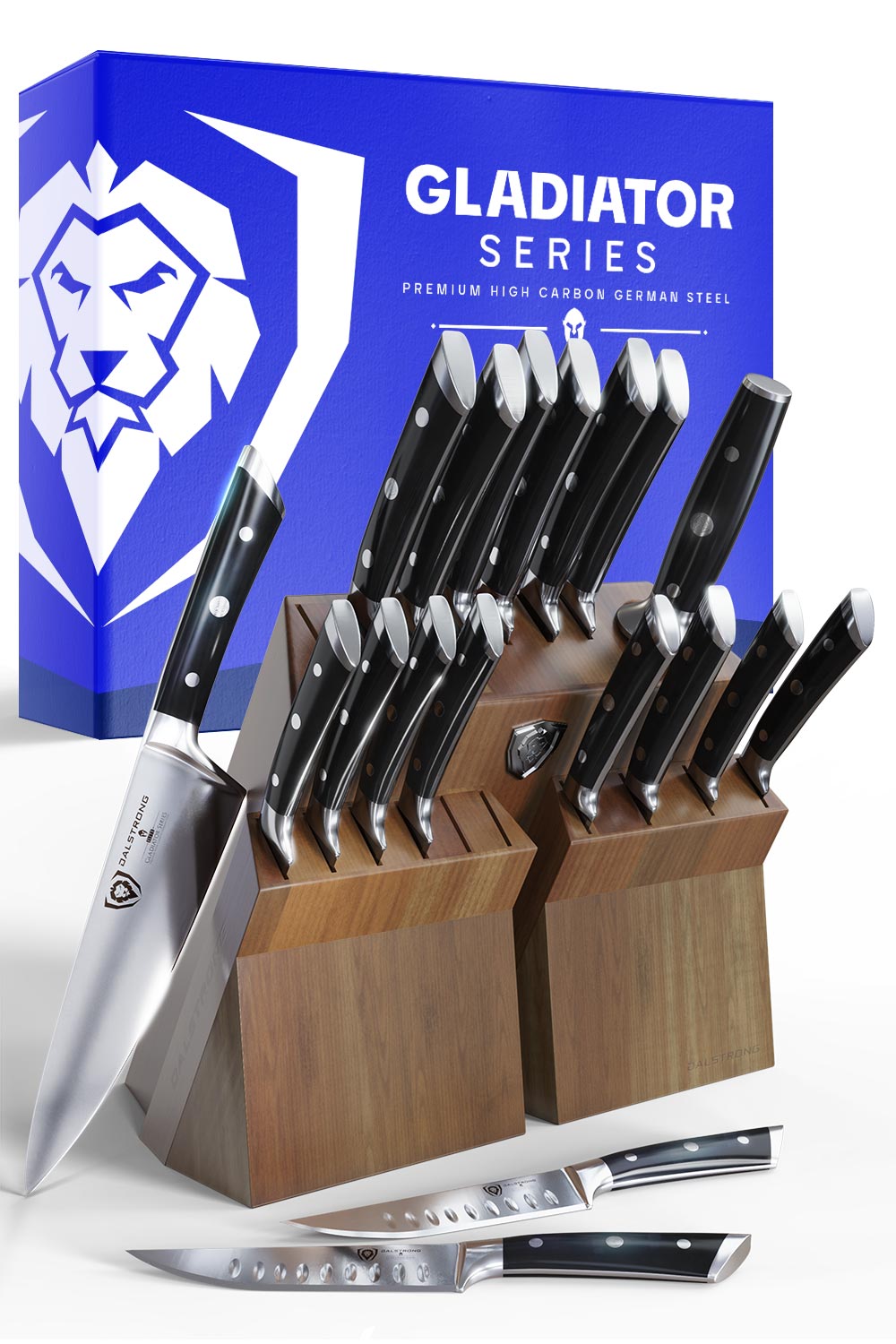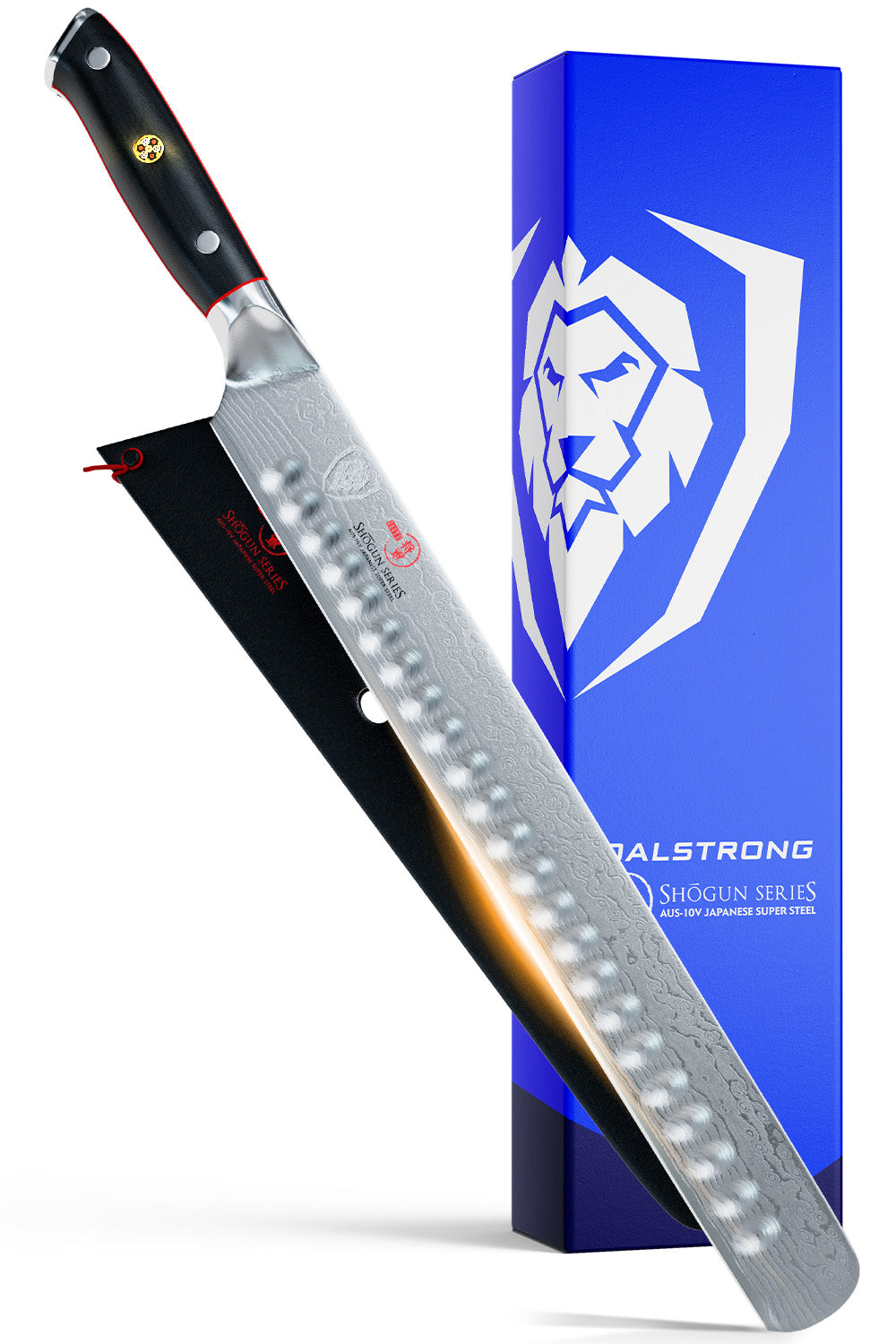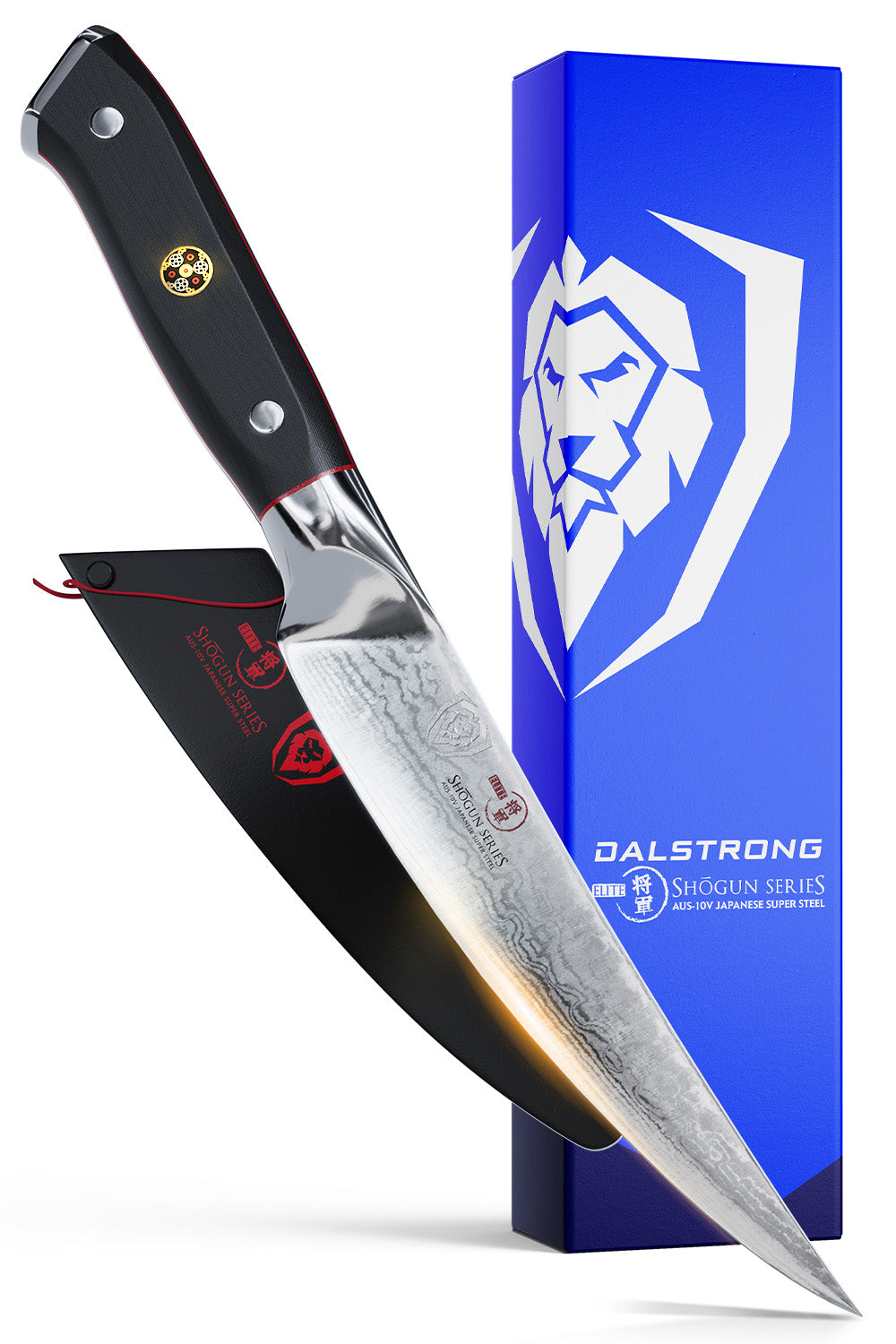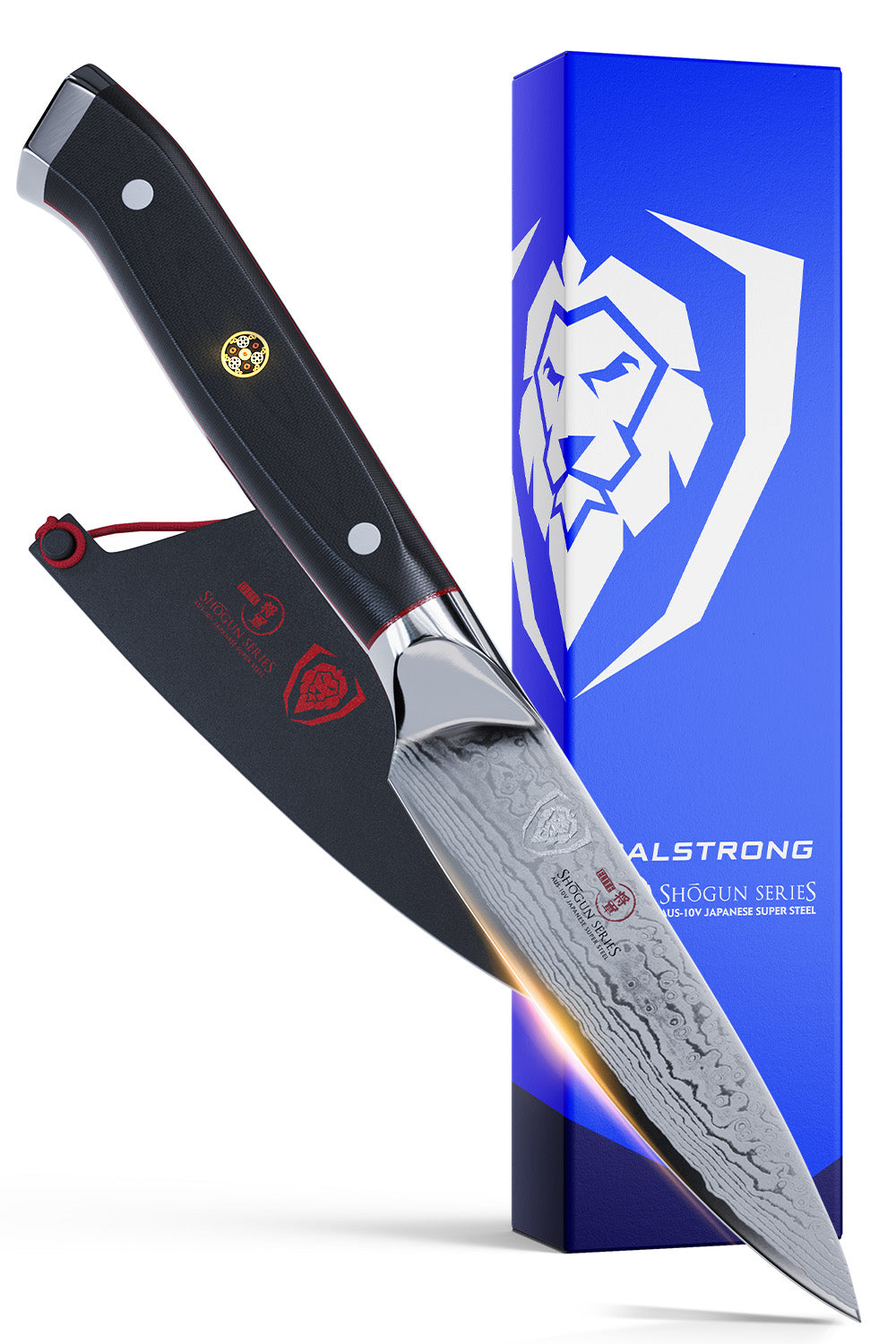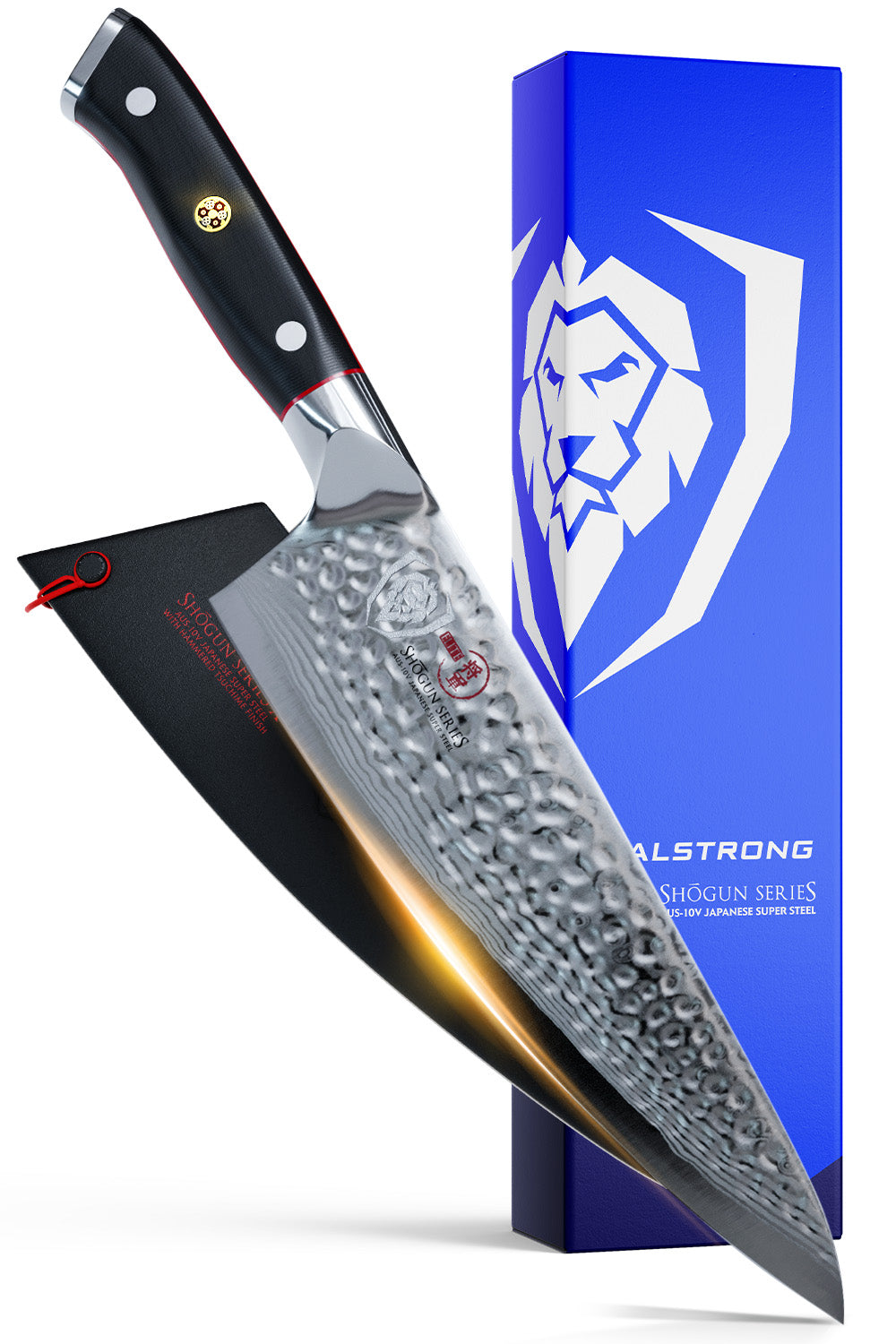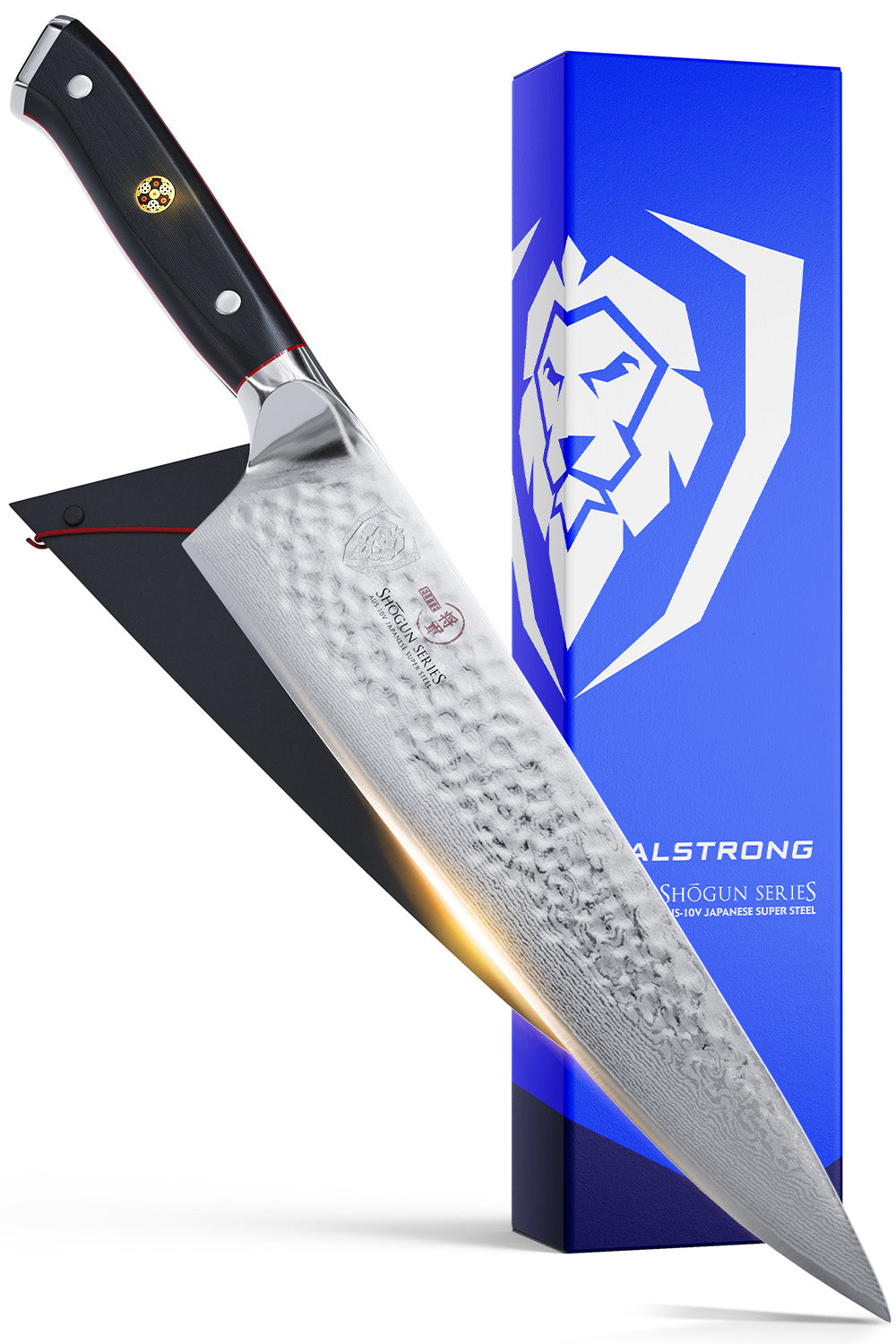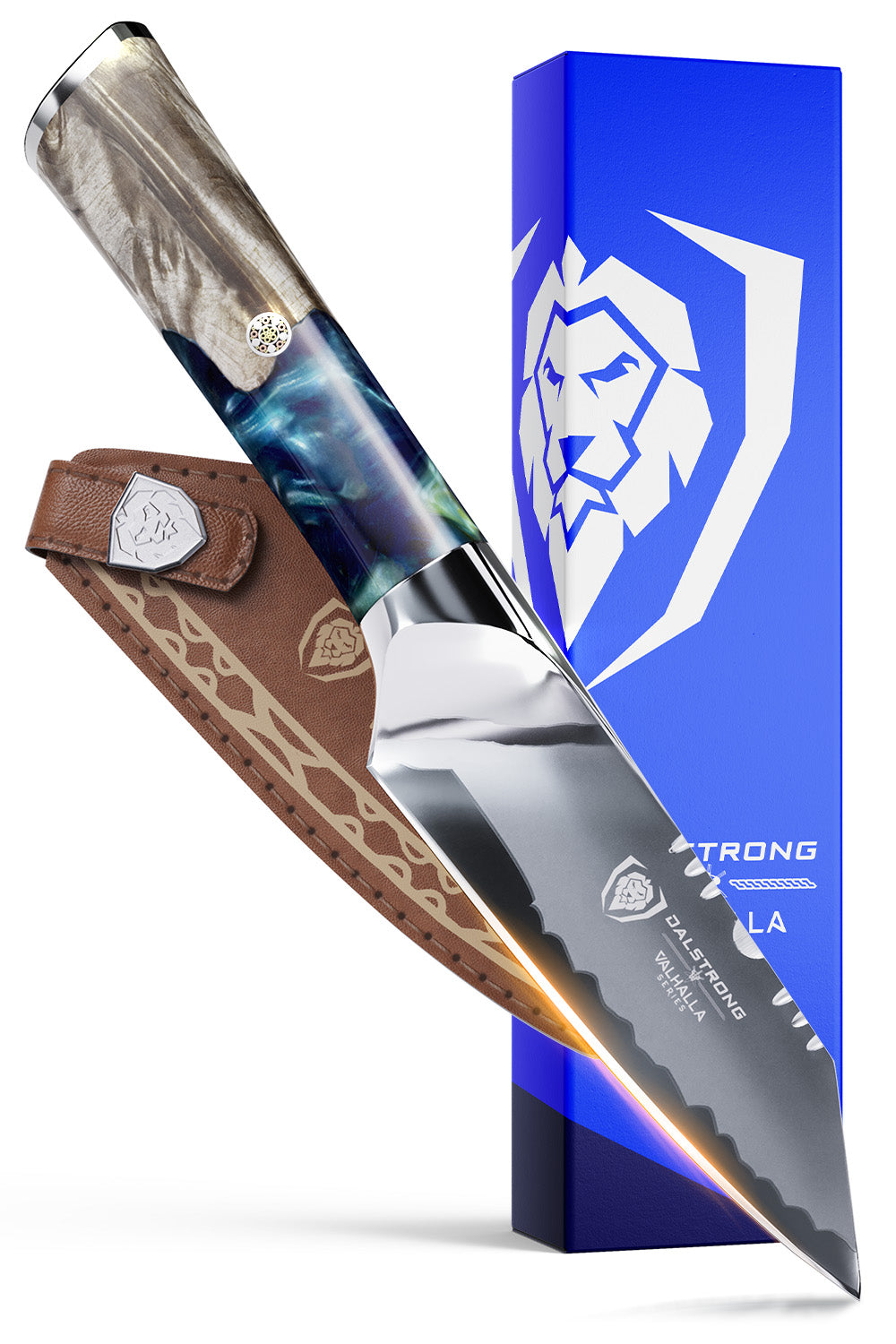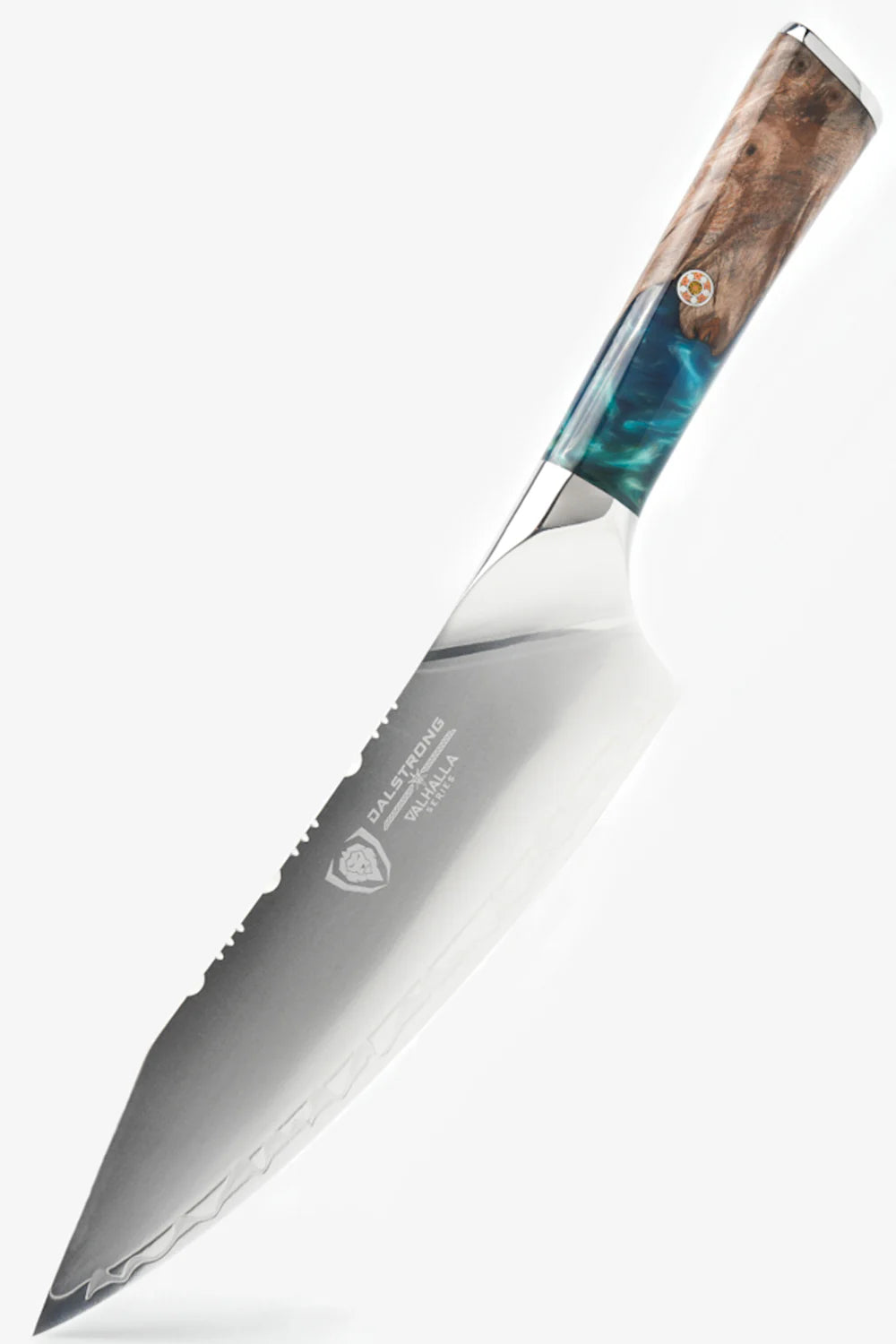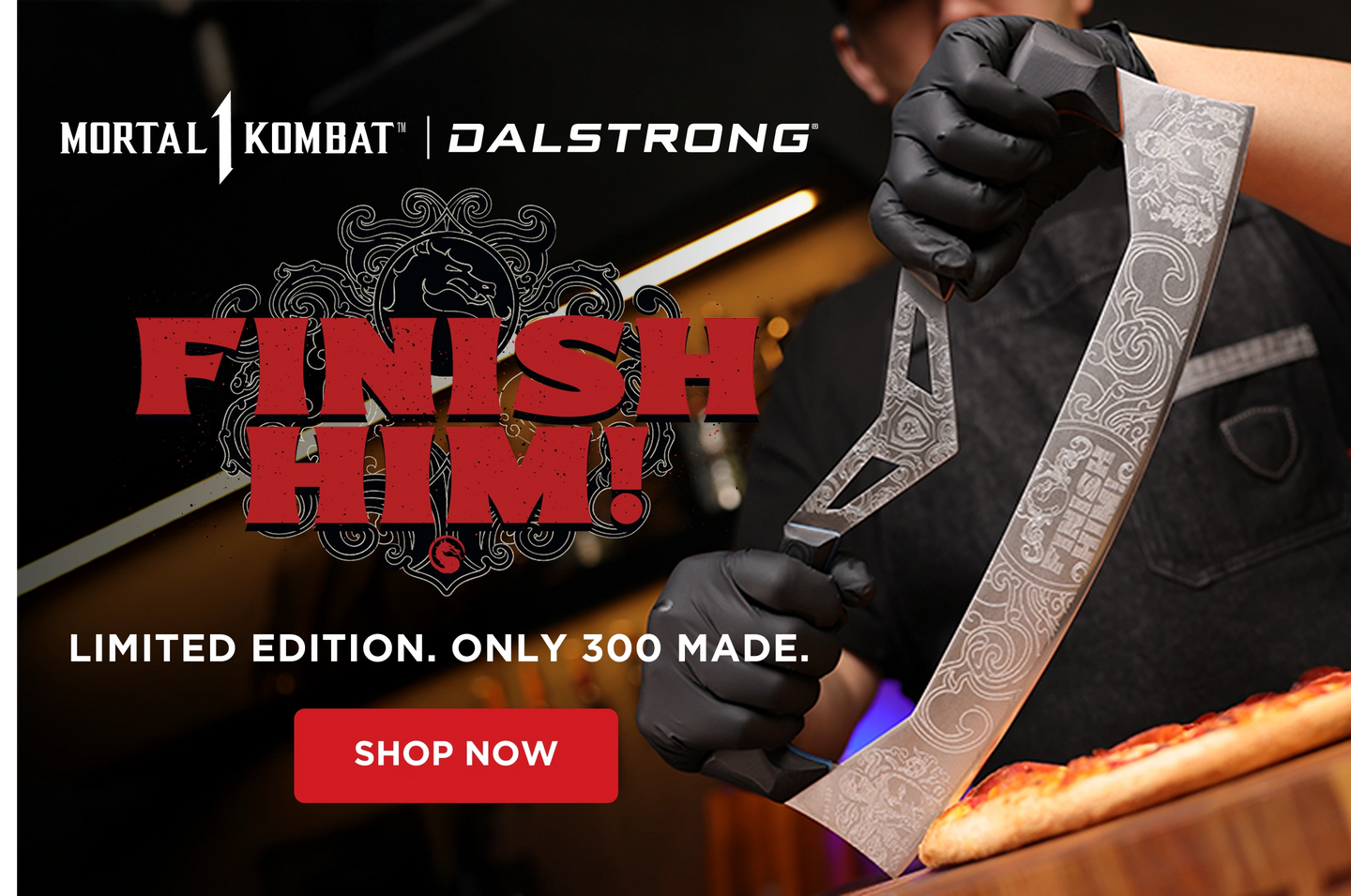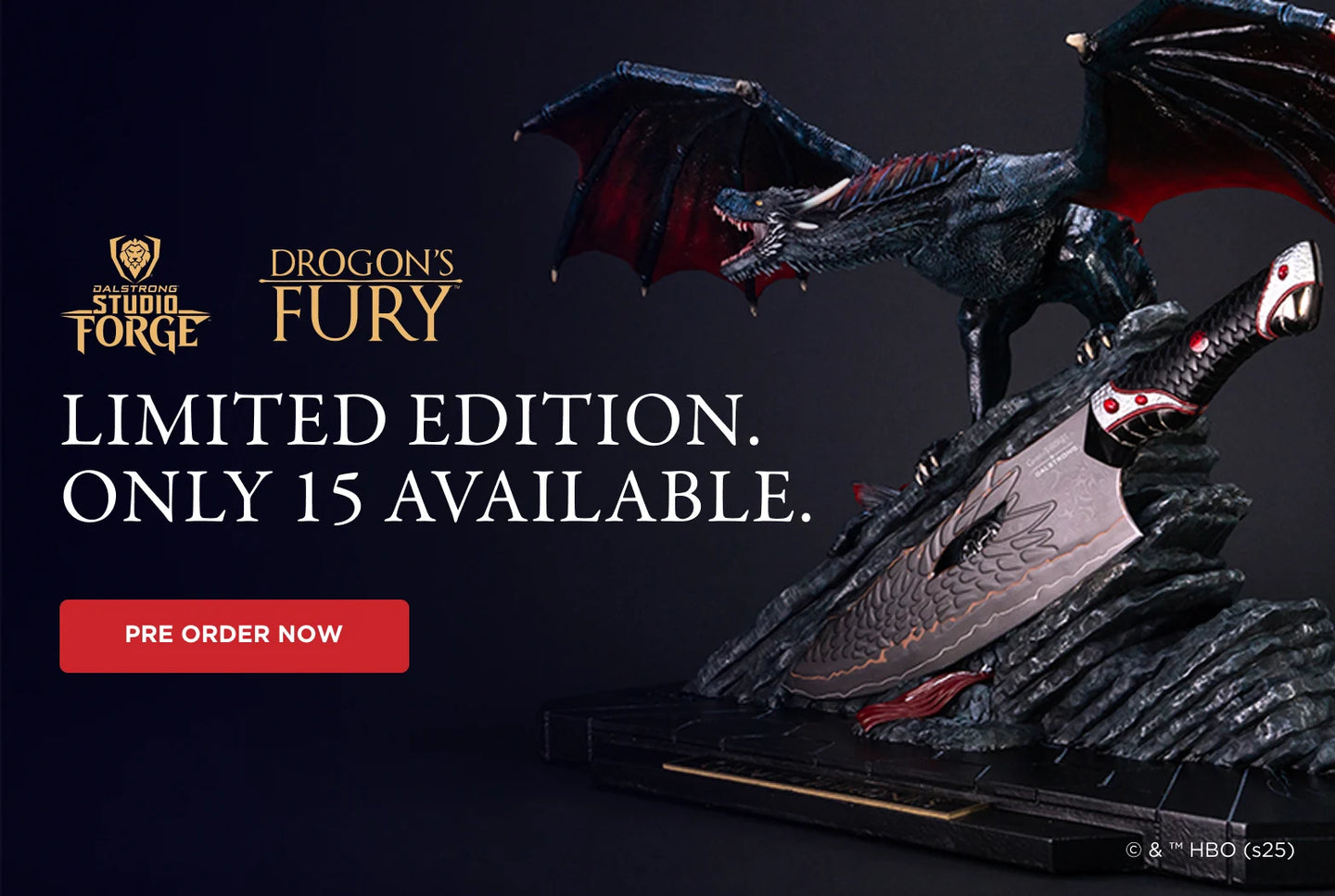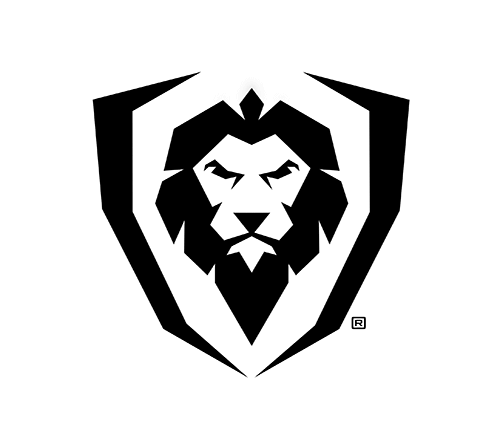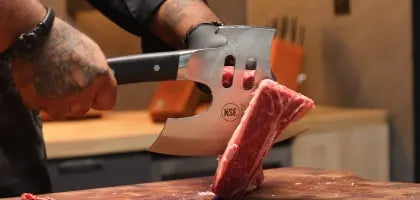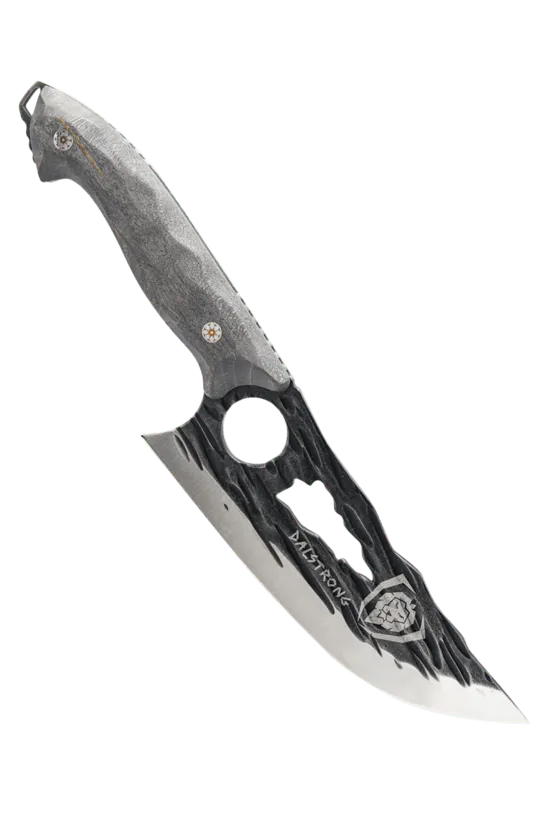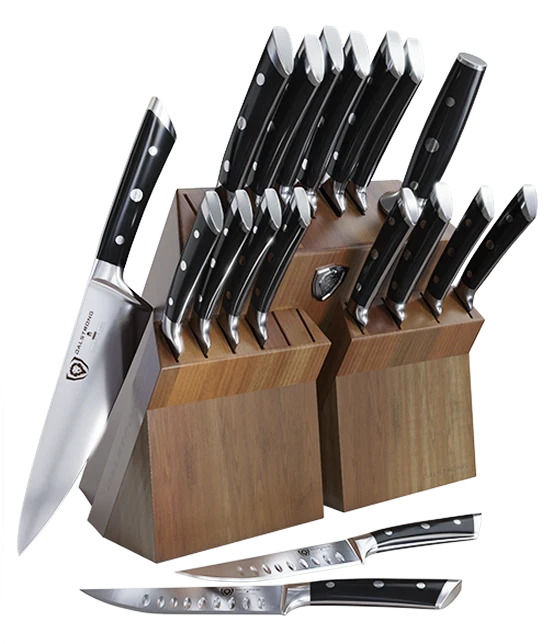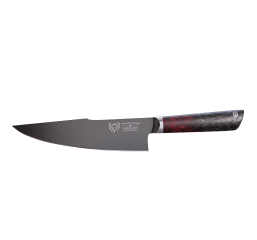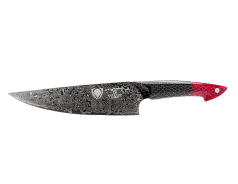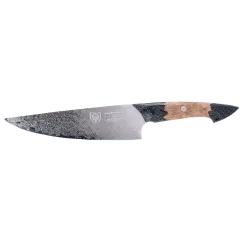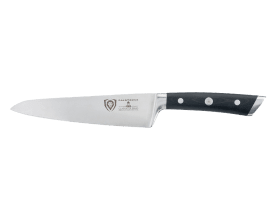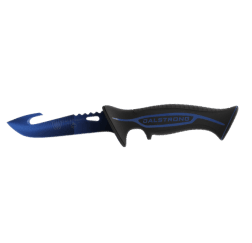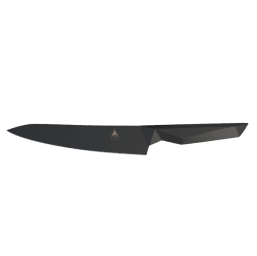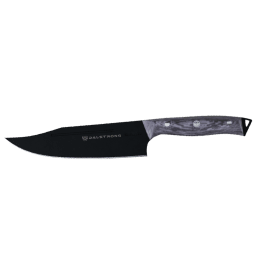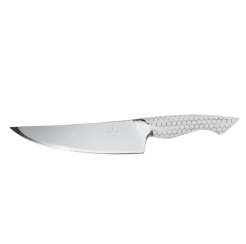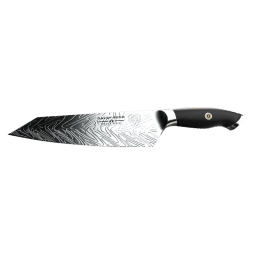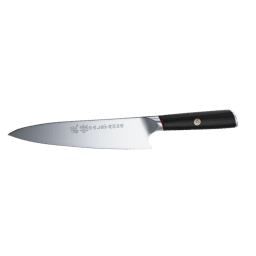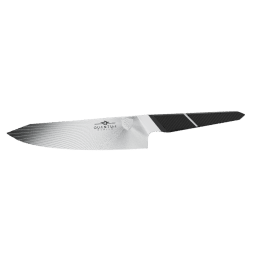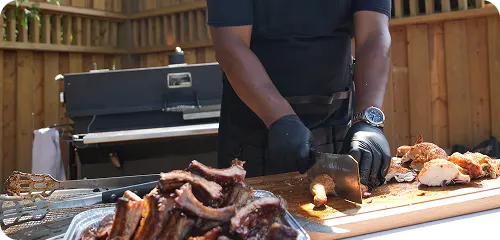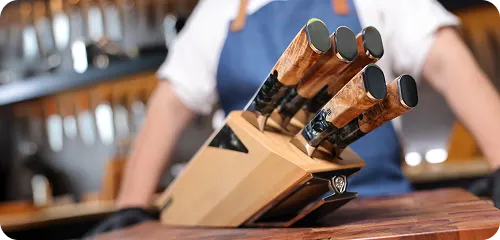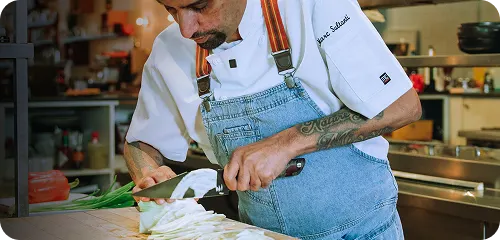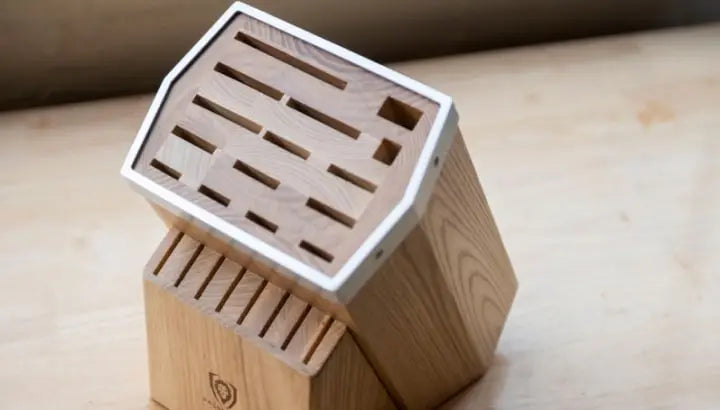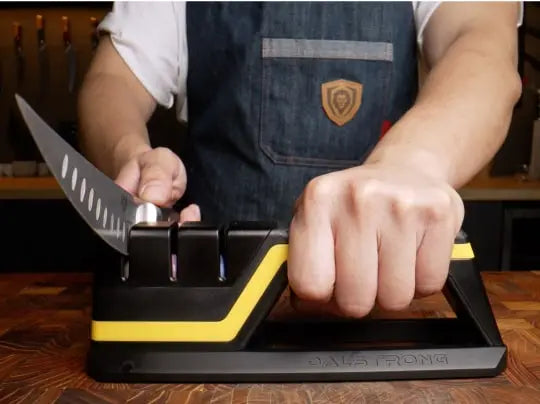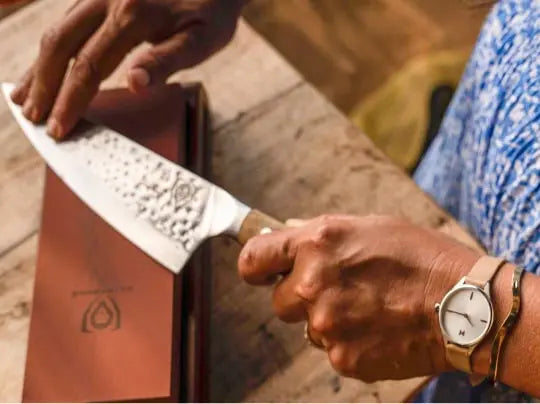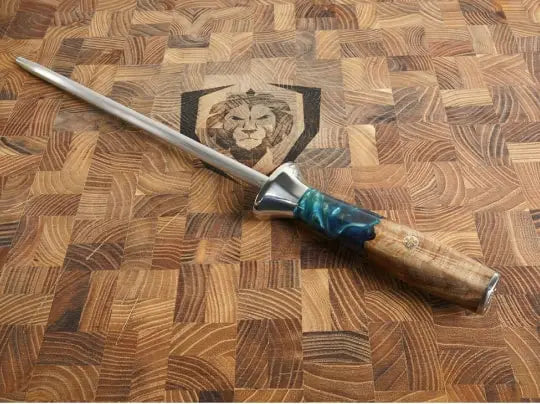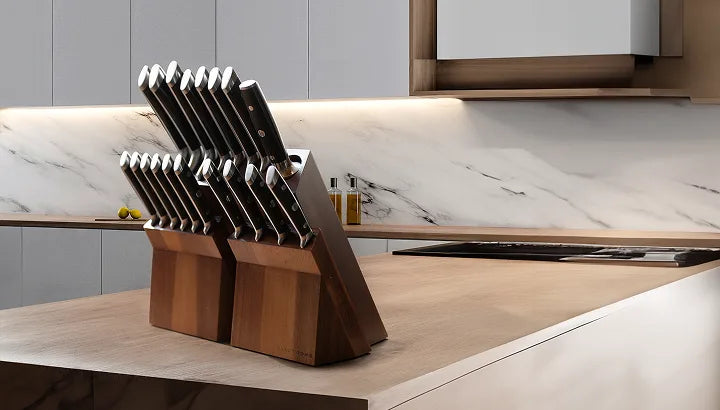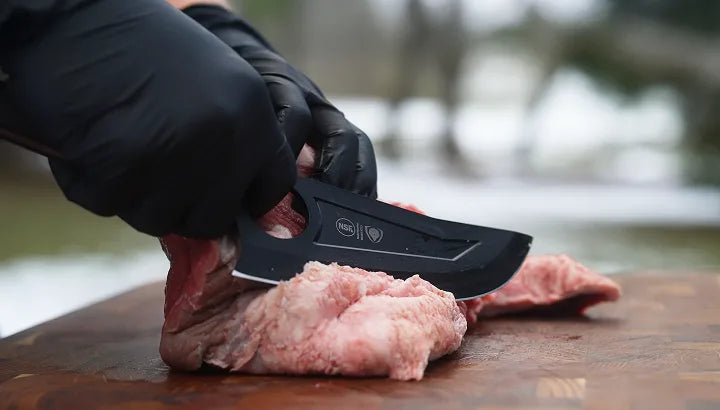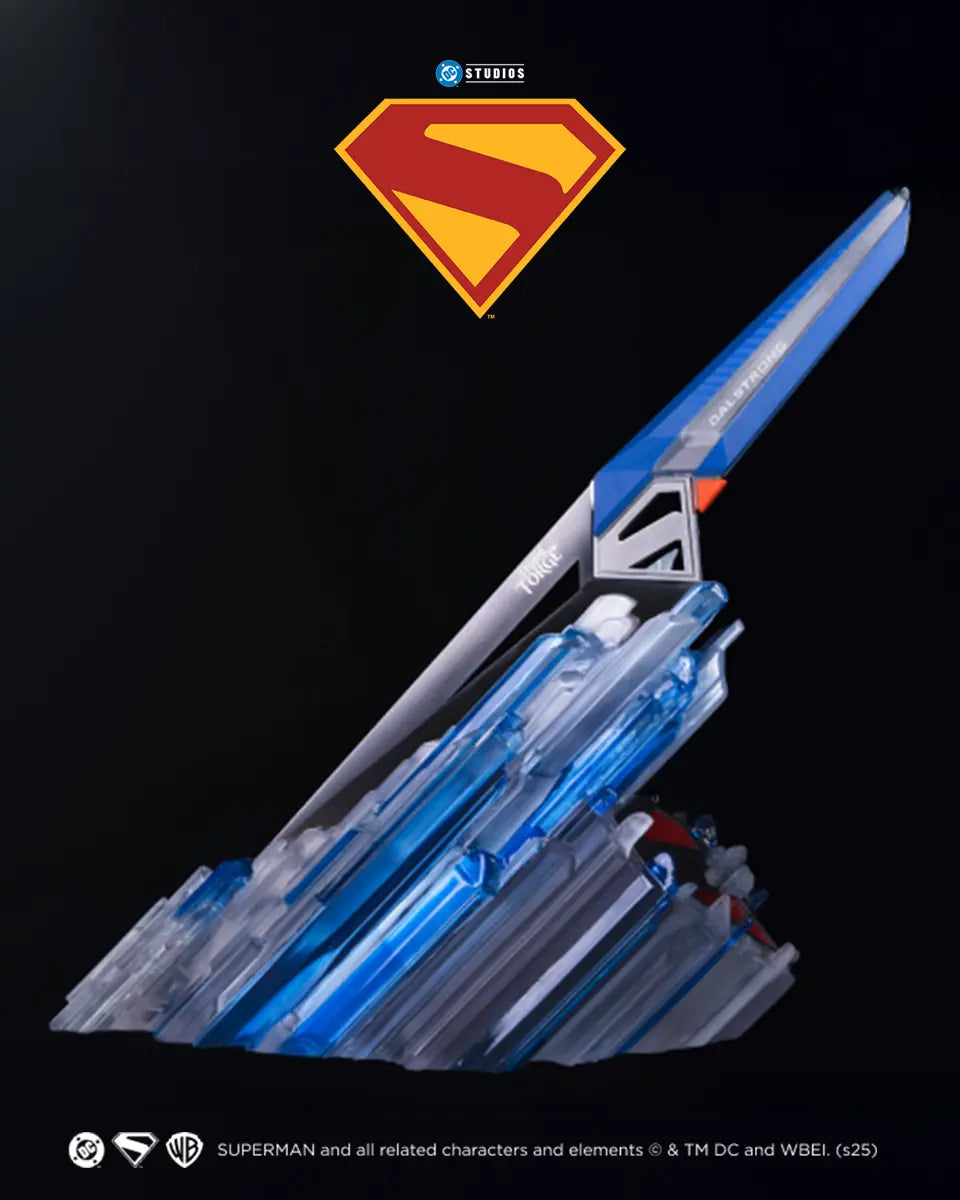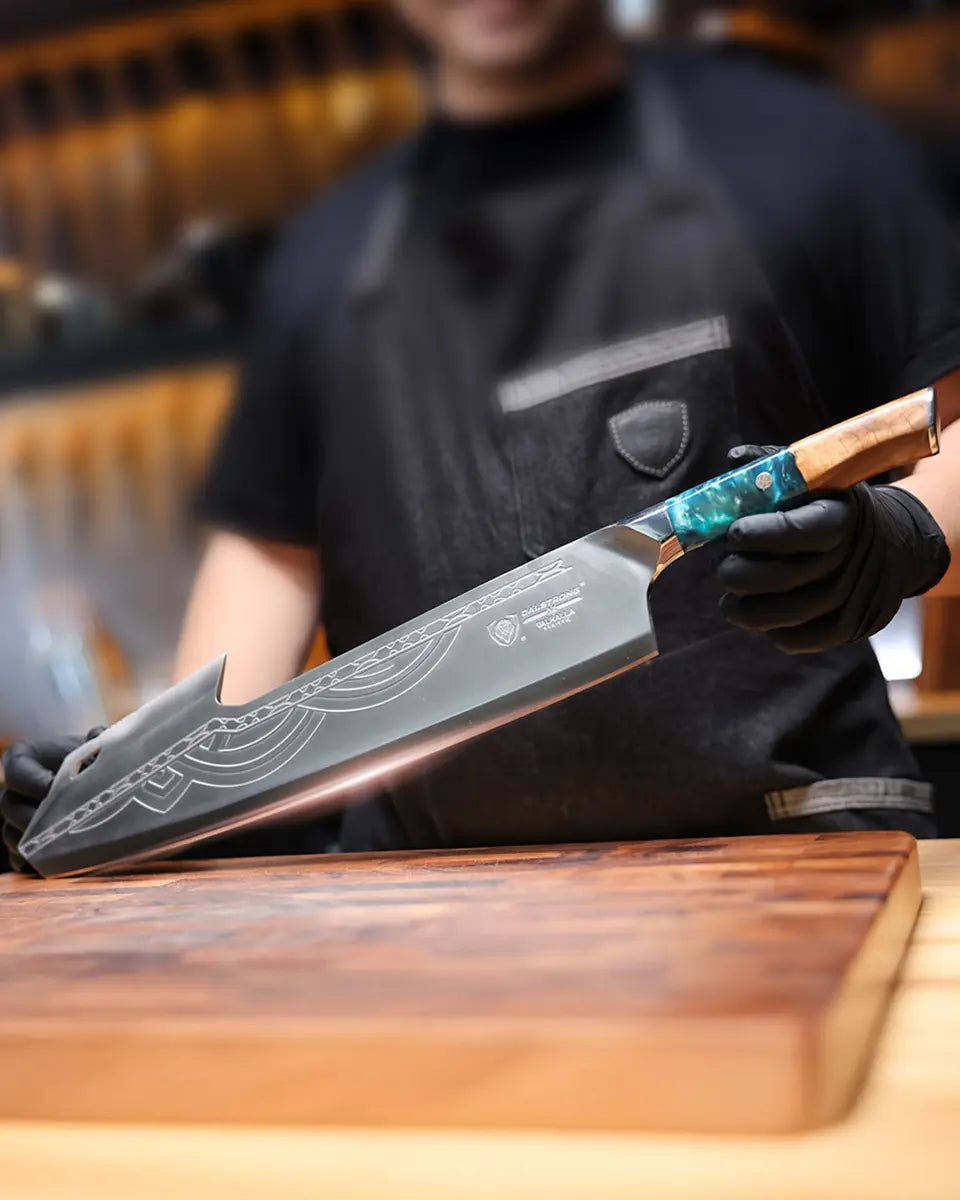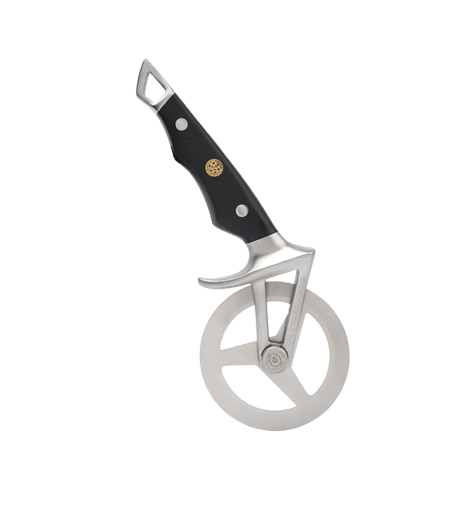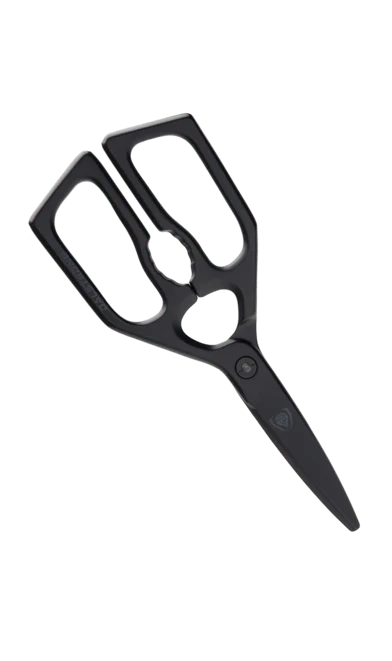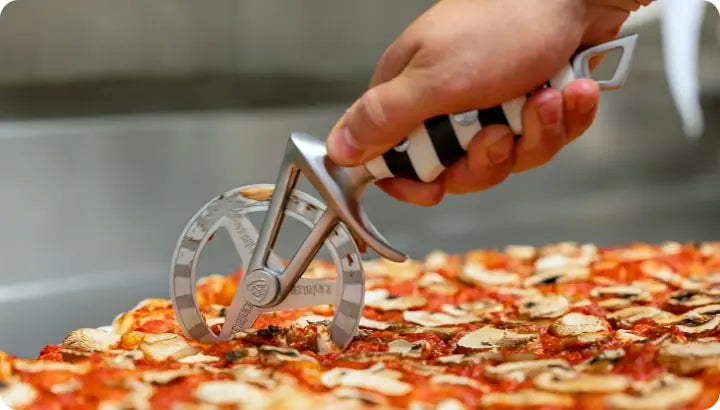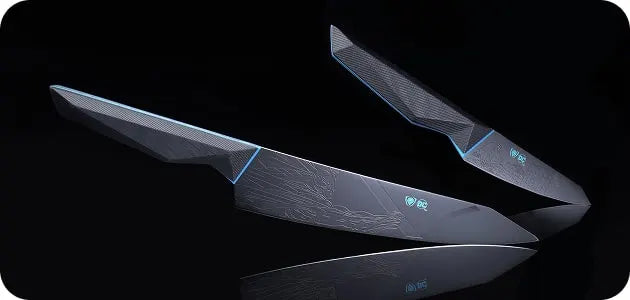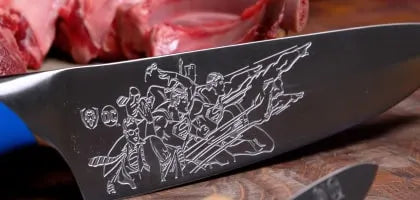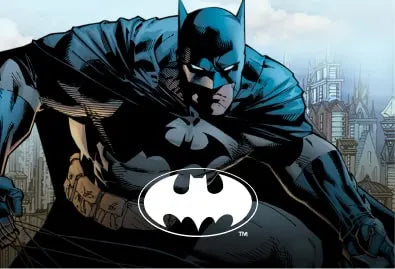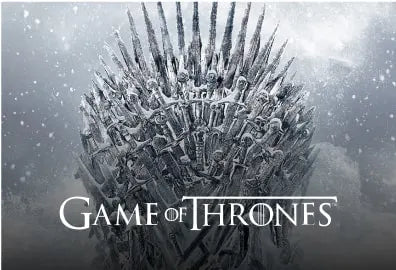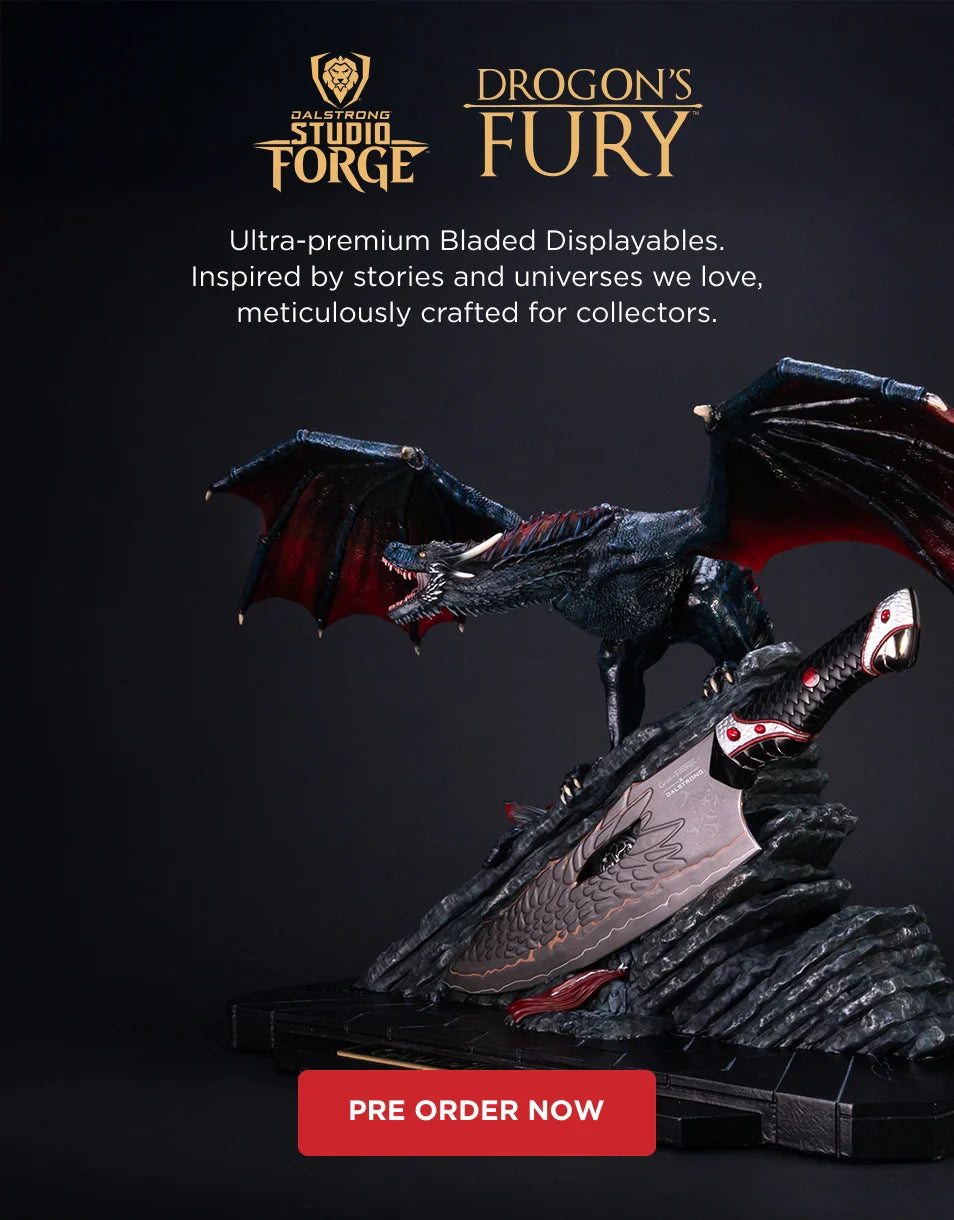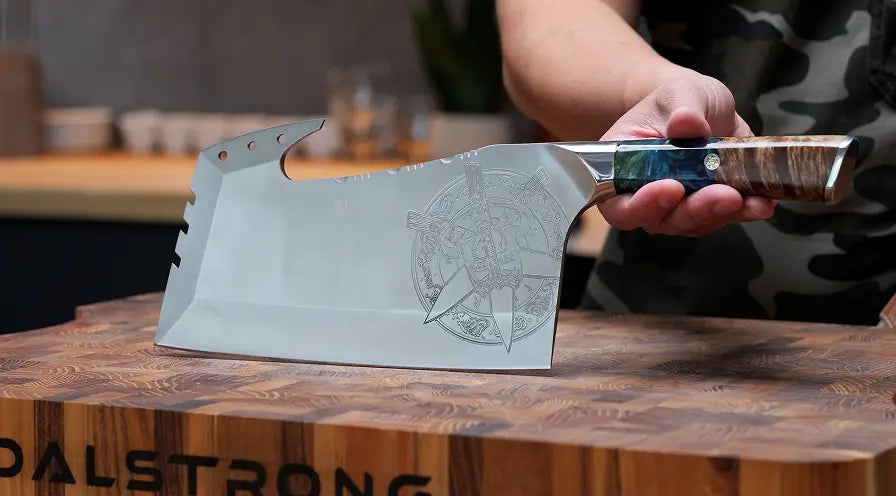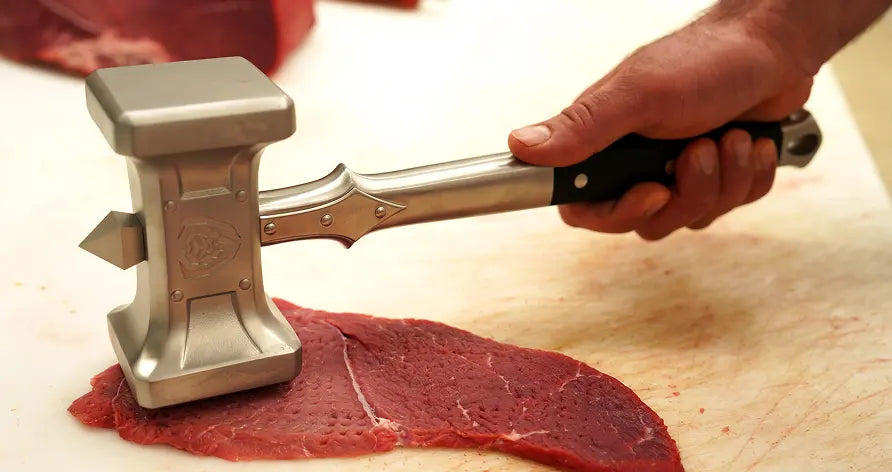Best Japanese Knives
- Quantum 1 Series 7” Santoku Knife—A versatile multi-use Japanese chef’s knife
- Shadow Black Series 8.5” Kiritsuke Knife—Another multi-use chef’s knife
- Quantum 1 Series 7” Nakiri Knife—Large rectangular-shaped double bevel knife used for chopping and slicing vegetables
- Ronin Series 6” Deba Knife—Single bevel knife typically used for filleting fish or other meat with small bones
- Ronin Series 7” Usuba Knife—Single bevel vegetable slicing knife
- Gladiator Series 10.5” Yanagiba Knife—Long, thin Japanese kitchen knife typically used to cut raw fish for sushi
- Ronin Series 5.5” Honesuki Knife—Boning knife
Gladiator Series 10.5" Yanagiba Knife
The Japanese have long been known for their knives, chisels and samurai swords. They have crafted many different types of knives over centuries, and almost all decent chefs have at least a handful of Japanese knives in their collection.
They are desirable for so many reasons, but mainly for their hard steel and light, thin, super sharp edge. This makes them the ideal choice for slicing, dicing and more precise cutting jobs. They are often easier to sharpen than a western knife or European knife, and typically have better edge retention if they are properly cared for.
So if you really want to upgrade your knife collection and equip your kitchen with some of the best knives on the market, a Japanese knife set is well worth your investment. But there are so many different types that it can be overwhelming to know which ones you really need. Every Japanese knife brand can range in price depending on the type of steel used and the methods used to craft and sharpen, but no matter your budget, you can likely find a quality Japanese knife of every type to add to your knife block.
Take note that single bevel knives (sharpened only on one side of the blade) require a specific left-handed knife for left-handed users. Double bevel knives can be used by both left and right-handed cooks.
You can check out all of our Japanese knives here.
Best Japanese Knives To Add To Your Knife Set
1. Santoku Knife ($49 - $129)
The Santoku knife is a multi-use, general purpose chef’s knife, traditionally named for its “three purposes”, cutting meat, fish and vegetables or for the three cutting tasks it can perform, chopping, slicing and dicing. Its double bevel blade is typically from 5 to 7 inches long, and is recognizable by its “sheep’s foot” shaped tip.
This Japanese chef’s knife has traditionally been a staple in every Japanese kitchen and is now in most American kitchens, because its versatility is invaluable to any cook, regardless of their level of expertise. With so many beautiful Santuko knife options to choose from, it should be easy to find one that suits your needs.
Dalstrong Santoku Knife Options
Gladiator Series 5” Santoku Knife -- Precision forged, ultra sharp, single-piece, high carbon German ThyssenKrupp Steel
Gladiator Series 7” Santoku Knife -- Precision forged, ultra sharp, single-piece, high carbon German ThyssenKrupp Steel
Shadow Black Series 7” Santoku Knife -- Precision forged, ultra sharp, single-piece, high carbon steel with a black, non-reflective titanium-nitride coating
Phantom Series 7” Santoku Knife -- Precision forged premium Japanese steel and pakkawood handle
Crusader Series 7” Santoku Knife -- Precision forged, ultra-sharp, single-piece high carbon ThyssenKrupp German stainless steel
Shogun Series 5” Santoku Knife -- Japanese super steel core sandwiched between 66 layers of premium high-carbon stainless steel
Frost Fire Series 7” Santoku Knife -- 7-layer high-carbon, high-chromium steel with added cobalt
Quantum 1 Series 7” Santoku Knife -- Precision forged, ultra sharp, single-piece, high carbon American steel
Shogun Series 7” Santoku Knife -- Precision forged with an ultra-premium Japanese ‘super steel’ cutting core with 66-layers of high-carbon stainless steel cladding
Omega Series 7” Santoku Knife -- Ultra-premium American forged hyper steel; 67-Layered Damascus sharpened under the ancient 3-step Honbazuke method
2. Kiritsuke Knife ($69 - $159)
Shadow Black Series 8.5" Kiritsuke Chef Knife - NSF Certified
The Kiritsuke knife is another versatile multi-use chef knife, but in a traditional Japanese kitchen, the Kiritsuke knife is a symbol of experience and expertise and is typically only used by the head chef. This is because the Kiritsuke knife has the ability to function as both a Usuba knife and a Yanagiba knife, but it is difficult to perform both of those functions at the highest level unless you have considerable experience.
But don’t let that intimidate you! It’s an extremely useful chef knife in any home kitchen for both slicing fish or cutting vegetables. Typically a single bevel knife, double bevel Kiritsuke knives are becoming more prevalent.
Dalstrong Kiritsuke Knife Options
Gladiator Series 8.5” Kiritsuke Chef Knife -- Precision forged, ultra sharp, single-piece, high carbon German ThyssenKrupp Steel
Crusader Series 8.5” Kiritsuke Chef Knife -- Precision forged, ultra-sharp, single-piece high carbon ThyssenKrupp German stainless steel
Shadow Black Series 8.5” Kiritsuke Chef Knife -- Precision forged, ultra sharp, single-piece, high carbon steel with a black, non-reflective titanium-nitride coating
Phantom Series 9.5” Kiritsuke Chef Knife -- Precision forged premium Japanese steel and pakkawood handle
Shogun Series 8.5” Kiritsuke Chef Knife (double bevel) -- Precision forged with an ultra-premium Japanese ‘super steel’ cutting core with 66-layers of high-carbon stainless steel cladding
Omega Series 8.5” Kiritsuke Chef Knife Collector’s Set -- Ultra-premium American forged hyper steel; 67-Layered Damascus sharpened under the ancient 3-step Honbazuke method
3. Nakiri Knife ($69 - $129)
Crusader Series 7" Nakiri - NSF Certified
The Nakiri knife is a large, rectangular shaped, double bevel knife with a tall, thin, flat blade that is typically used for chopping, mincing and slicing vegetables.
Without the sharp tip of other knives, it is not typically used for very precise cutting tasks, but can chop veggies quickly and efficiently. It’s a must-have for vegetarians who spend a lot of time in the kitchen!
Dalstrong Nakiri Knife Options
Gladiator Series 7” Nakiri Knife -- Precision forged, ultra sharp, single-piece, high carbon German ThyssenKrupp Steel
Shadow Black Series 7” Nakiri Knife -- Precision forged, ultra sharp, single-piece, high carbon steel with a black, non-reflective titanium-nitride coating
Crusader Series 7” Nakiri Knife -- Precision forged, ultra-sharp, single-piece high carbon ThyssenKrupp German stainless steel
Phantom Series 6” Nakiri Knife -- Precision forged premium Japanese steel and pakkawood handle
Frost Fire Series 6.5” Nakiri Knife -- 7-layer high-carbon, high-chromium steel with added cobalt
Omega Series 7” Nakiri Knife -- Ultra-premium American forged hyper steel; 67-Layered Damascus sharpened under the ancient 3-step Honbazuke method
Shogun Series X 6” Nakiri Knife -- Ultra premium Japanese super steel core; with 66-layers of high-carbon stainless steel cladding
Quantum 1 Series 7” Nakiri Knife -- Precision forged, ultra sharp, single-piece, high carbon American steel
4. Deba Knife ($119)
The Ronin Series 6" Deba Knife - Single Bevel Blade
The Deba knife is a single bevel knife typically used in a Japanese kitchen for filleting fish or other meats with small bones. This Japanese carving knife has a thicker blade with a thin, sharp tip which enables it to cut through small and medium sized bones with ease and precision.
It is not recommended to use the Deba knife for cutting through large bones however, which can chip or crack the blade. This kitchen knife is an important addition to your knife collection if you prepare and cook a lot of whole fish and poultry.
Dalstrong Deba Knife Options
Ronin Series 6” Deba -- Japanese super steel cutting core at 62+ Rockwell hardness and 67 layers of premium high-carbon stainless steel
Shogun Series “S” 6” Deba (LEFT HANDED) -- Precision forged with an ultra-premium Japanese ‘super steel’ cutting core with 66-layers of high-carbon stainless steel cladding
5. Usuba Knife ($129)
The Ronin Series 7" Usuba Knife - Single Bevel
The Usuba knife is another rectangular shaped vegetable knife, somewhat similar to the Nakiri in appearance and function. However, the Usuba is a single bevel knife with a thicker spine and tall, thin blade made for very precisely and thinly slicing vegetables.
The beauty of the Usuba is that the thin and extremely sharp blade is able to slice so delicately that it minimizes damage to the skins of the fruits and vegetables you are cutting, so it’s great for cutting vegetables that you’re planning on serving raw.
Dalstrong Usubu Knife Options
The Ronin Series 7” Usuba Knife -- Japanese super steel cutting core at 62+ Rockwell hardness and 67 layers of premium high-carbon stainless steel
6. Yanagiba Knife ($69 - $119)
The Ronin Series 10.5" Yanagiba & Sushi Knife - Single Bevel Sushi Blade
The Yanagiba knife, or Yanagi knife, is traditionally and primarily used as a sushi and sashimi knife. This long, thin Japanese kitchen knife has a pointed tip and single bevel blade with an acute edge angle which so effortlessly slices through your piece of fish or meat that it eliminates the need to use the sawing motion, preserving its integrity and texture.
Though the Yanagiba is most well-known as a sushi chef’s knife, it is a great knife to have in the kitchen for even an amatuer sushi enthusiast!
Bonus: Check out this great guide for making sushi!
Gladiator Series 10.5” Yanagiba Knife -- Precision forged, ultra sharp, single-piece, high carbon German ThyssenKrupp Steel
Phantom Series 9.5” Yanagiba Knife -- Premium Japanese steel with pakkawood handle
The Ronin Series 10.5” Yanagiba Knife -- Japanese super steel cutting core at 62+ Rockwell hardness and 67 layers of premium high-carbon stainless steel
Shogun Series “S” 10.5” Yanagiba Knife (LEFT HANDED) -- Precision forged with an ultra-premium Japanese ‘super steel’ cutting core with 66-layers of high-carbon stainless steel cladding
7. Honesuki Knife ($109)
The Ronin Series 5.5" Honesuki Knife - Single Bevel Blade
The Honesuki knife is a single bevel Japanese boning knife primarily used to butcher poultry and fish. Their stiff blade and triangular pointed tip are specifically designed for deboning and breaking apart meats and fish with precision.
It is best used cutting through connective tissue (tendons, cartilage, etc.) rather than through large bones. Its thick heel is great for scraping meat from bone while its thin, sharp tip can make more delicate cuts. This Japanese kitchen knife is a useful addition to any knife set.
Ronin Series 5.5” Honesuki Knife -- Precision forged knife from a single piece of ultra premium Japanese high carbon
Shogun Series “S” 5.5” Honesuki Knife (LEFT HANDED) -- Precision forged with an ultra-premium Japanese ‘super steel’ cutting core with 66-layers of high-carbon stainless steel cladding
8. Additional Japanese Knives To Add To Your Collection
Gyuto knife--Similar to a Western-style chef’s knife, the Gyuto knife is another versatile double bevel multi-use utility knife.
Petty knife--The petty knife is basically a Japanese paring knife. This small and nimble utility knife is best used for peeling vegetables and fruits.
Bread knife--Though not typically thought of as a Japanese knife, the bread knife is found in almost every Japanese kitchen. A bread knife has a serrated edge that enables you to easily slice through bread without tearing or crushing it.
Learn more about where Dalstrong Knives are manufactured here!
9. Types of Knife Sharpeners
Dalstrong #3000/#8000 Grit Premium Whetstone Set
If you’re investing in the best Japanese knives, you want to make sure you’re maintaining them properly in order to give them the longest blade edge retention possible as well as the longest lifespan for the knife itself.
Maintaining a super sharp edge on your knife also prevents you from unnecessarily tearing and damaging the food you are so painstakingly preparing. Knowing the best types of knife sharpeners is crucial to properly caring for your knife blade.
- Whetstone -- Also known as a waterstone, a whetstone is basically a block of stone used to sharpen the blade of a knife. It takes a little practice to get the hang of it, but is considered by many experts to be the best method for keeping a sharp edge on your chefs knives.
- Pull-through sharpeners -- These are much easier to use, but are not necessarily ideal for all types of knives. While it may be a good choice for a hefty German knife, using a pull-through sharpener on a thin Japanese blade could cause it to chip.
- Honing Rod -- A honing rod or honing steel is not really a sharpener since it doesn’t sharpen down or remove any of the blade. Rather, you’re straightening out and realigning the metal which is key to edge retention. Almost every Japanese chef uses a honing steel every day to keep their Japanese cutlery in top condition.
10. Frequently Asked Questions About Japanese Knives
Why are Japanese knives so expensive?As with almost everything, you get what you pay for, and regardless of knife brand, a Japanese knife will almost always cost more than a European knife or western knife.
One reason Japanese knives are so expensive is that you’re paying for the highest quality steel and other materials. High quality Japanese knives are made with high carbon steel that is much more durable than the stainless steel many cheaper knives are made of. In addition, the design and craftsmanship as well as the cost of the labor required to make a forged knife.
Are Japanese knives worth the cost?Don’t just take my word for it. Ask any professional chef, and they will almost all say, unequivocally, yes. The best Japanese knives are made from the highest quality steel, and the highest quality steel will not only give you superior performance and experience, but will also give your knives a longer life.
Written by Meredith Sims
Devoted follower of the farm-to-table scene, Meredith is most well-known for her ability to whip up a gourmet meal in the tiniest of spaces, including her camper van.



